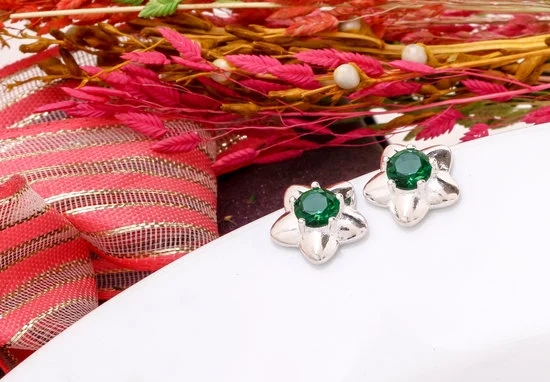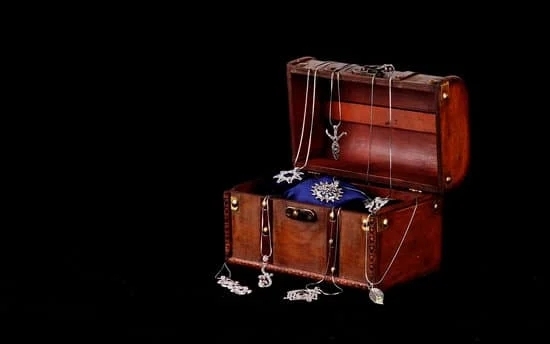The history and significance of ancient Egyptian jewelry can be traced back to one of the most fascinating civilizations in history. From extravagant royal adornments to everyday wearable pieces, ancient Egyptian jewelry holds a deep cultural and historical significance that continues to captivate people around the world. The use of luxurious materials such as gold, precious stones, and glass played a vital role in shaping social status and religious beliefs in ancient Egypt.
Ancient Egyptian jewelry is not only an expression of artistic craftsmanship but also a reflection of the society’s values and beliefs. The materials used in creating these ornate pieces, such as gold and precious stones, held immense cultural importance and were deeply embedded in religious practices and social hierarchies. Understanding the significance of these materials provides valuable insight into the culture and society of ancient Egypt.
Moreover, symbolism played a crucial role in ancient Egyptian jewelry, with specific symbols and motifs holding deep meaning in religious and cultural contexts. These symbols often represented aspects of their belief system, such as protection, fertility, or the afterlife. As we delve into the world of ancient Egyptian jewelry, we will uncover the rich symbolism that adorned these exquisite pieces and gain a deeper understanding of their cultural significance.
Ancient Egyptian Jewelry Materials
Ancient Egyptian jewelry was crafted using a wide variety of materials, with the most prominent being gold, precious stones, and glass. Gold was highly valued and abundant in ancient Egypt, making it the metal of choice for crafting jewelry. It was associated with the sun god Ra and was believed to have protective and purifying properties.
Precious stones such as lapis lazuli, turquoise, carnelian, and amethyst were also used to adorn jewelry. These stones were not only aesthetically pleasing but also held symbolic meaning in ancient Egyptian culture.
In addition to gold and precious stones, glass was another important material used in ancient Egyptian jewelry. The production of glass beads dates back to the early third millennium BCE in Egypt, making it one of the oldest known glass-making traditions. Glass beads were often used in necklaces and other types of jewelry and were highly prized for their vibrant colors.
The use of these materials in ancient Egyptian jewelry reflected not only the craftsmanship of the jewelers but also the wealth and status of the wearer. Jewelry served as a symbol of power, social status, and religious significance in ancient Egyptian society.
| Material | Significance |
|---|---|
| Gold | Associated with the sun god Ra; believed to have protective and purifying properties |
| Precious Stones | Held symbolic meaning in ancient Egyptian culture; used for aesthetic appeal |
| Glass | Highly prized for their vibrant colors; one of the oldest known glass-making traditions |
The use of gold, precious stones, and glass in ancient Egyptian jewelry continues to fascinate historians, archaeologists, and modern-day designers due to its historical significance as well as its enduring impact on art and society. Understanding the materials used in ancient Egyptian jewelry provides insight into the cultural practices and beliefs of this civilization.
Symbolism in Ancient Egyptian Jewelry
The history and significance of ancient Egyptian jewelry can be seen in the symbolism embedded in these exquisite pieces. Egyptians believed that jewelry had the power to protect them from evil forces and bring them good luck. As a result, many of the symbols and motifs found in ancient Egyptian jewelry were deeply meaningful and held spiritual significance.
Meaning Behind Specific Symbols and Motifs
Ancient Egyptian jewelry was adorned with various symbols and motifs that held specific meanings to the wearers. For example, the ankh symbol represented life, while the scarab beetle symbolized rebirth and regeneration. The Eye of Horus was believed to provide protection, while the lotus flower symbolized rebirth and resurrection. Each symbol had a deep connection to religious beliefs, mythology, and cultural traditions, making them an integral part of ancient Egyptian society.
Significance in Religious and Cultural Contexts
These symbols were not just decorative elements but held great significance in religious rituals and everyday life. Amulets featuring these symbols were worn for protection, and certain pieces of jewelry were used as offerings in temples or during funerary practices. The use of these symbols in jewelry highlights the importance of spirituality and belief systems in ancient Egyptian culture, showcasing how deeply intertwined jewelry was with their daily lives.
A Lasting Legacy
The symbolism found in ancient Egyptian jewelry continues to captivate modern audiences. Many contemporary jewelers draw inspiration from these ancient symbols, incorporating them into their designs. The enduring legacy of ancient Egyptian jewelry is a testament to its lasting impact on art and society, preserving its rich history for generations to come. Through the study and preservation of these symbolic pieces, we gain valuable insights into the beliefs and values of one of the world’s most fascinating civilizations.
Royal and Elite Jewelry
Extravagant Adornments of Pharaohs and Nobility
The history and significance of ancient Egyptian jewelry are exemplified in the extravagant adornments worn by the pharaohs and nobility. These individuals were adorned with opulent jewelry made from the most precious materials, including gold, lapis lazuli, turquoise, and faience.
The elaborate designs of their jewelry showcased their wealth, power, and status within ancient Egyptian society. Royal jewelry was not only a symbol of prestige but also served as a way for rulers to display their connection to the gods and their divine right to rule.
Symbolism and Spiritual Significance
In addition to its material opulence, royal and elite jewelry held deep symbolism and spiritual significance in ancient Egypt. It often featured motifs such as the ankh (symbolizing life), the djed pillar (representing stability), and the eye of Horus (associated with protection).
These symbols were not merely decorative; they carried profound religious meanings that reinforced the ruler’s authority and ties to the divine realm. The wearing of such symbolic jewelry was believed to provide protection, guidance, and blessings from the gods.
The Significance in Ancient Egyptian Society
The royal and elite jewelry played a crucial role in solidifying social hierarchies within ancient Egyptian society. By adorning themselves with lavish jewelry, pharaohs and nobility demonstrated their elevated positions while distinguishing themselves from the common people.
This emphasis on luxury also contributed to the economy and artistic advancements in ancient Egypt, as skilled craftsmen created intricate pieces for the ruling class. The historical significance of royal and elite jewelry extends beyond mere ornamentation; it reflects the power structures, religious beliefs, and artistic achievements of ancient Egypt.
Jewelry in Daily Life
In ancient Egypt, jewelry was not only a symbol of wealth and status but also an essential part of daily life for both men and women. The materials used in creating these pieces, such as gold, precious stones, and glass, were not only valued for their aesthetic appeal but also held religious and symbolic significance. Below are some insights into the role of jewelry in the daily lives of the average person in ancient Egypt:
- Adornments: Jewelry was worn by individuals of all social classes as a form of personal adornment. Both men and women adorned themselves with various types of jewelry, including rings, bracelets, necklaces, and earrings. These pieces were often intricately designed with symbolic motifs that held personal or cultural significance.
- Social Status: The type and quality of jewelry worn by individuals indicated their social status within ancient Egyptian society. While the elite class could afford luxurious materials and elaborate designs, the lower classes would wear simpler forms of jewelry made from less expensive materials. Jewelry served as a visible marker of one’s place in the social hierarchy.
- Amulets and Talismans: Beyond being decorative, many pieces of ancient Egyptian jewelry also served protective or magical purposes in daily life. Amulets and talismans were commonly worn to ward off evil spirits or bring good luck to the wearer. These items were believed to have supernatural powers that could benefit the wearer in various aspects of life.
The history and significance of ancient Egyptian jewelry in daily life offer valuable insights into the cultural practices and societal structures of this civilization. The wearing and use of jewelry went beyond mere ornamentation; it was deeply intertwined with religious beliefs, social customs, and personal identity within ancient Egyptian society. This enduring tradition continues to fascinate historians, archaeologists, and modern-day enthusiasts alike as they seek to unravel its meaning in the context of the past.
Technology and Techniques
Ancient Egyptian jewelry is renowned for its exquisite craftsmanship and intricate designs, reflecting the advanced technology and techniques used in creating these ornate pieces. The history and significance of ancient Egyptian jewelry are deeply intertwined with the innovative methods and skills employed by the artisans of that time.
The craftsmanship of ancient Egyptian jewelry was highly sophisticated, utilizing a variety of materials such as gold, precious stones, and glass. Gold, in particular, held immense value and symbolism in ancient Egyptian society, believed to be the flesh of the gods and associated with immortality. The mastery of metalworking allowed artisans to create intricate filigree work, granulation, and cloisonné enamel, showcasing their exceptional skill and attention to detail.
One of the most notable techniques used in ancient Egyptian jewelry-making is the art of faience. This material, made from ground quartz or sand mixed with a colorant and then fired at high temperatures, was used to create vibrant blue-green beads and amulets. The process required great precision and expertise to achieve the desired hues and shades, resulting in stunning pieces that were highly coveted.
Furthermore, ancient Egyptian artisans also mastered the art of stone carving and shaping. Gemstones such as lapis lazuli, turquoise, carnelian, and jasper were carefully cut and polished to create striking ornaments that adorned both royalty and commoners alike.
The meticulous attention to detail and the use of advanced techniques highlight the unparalleled level of skill possessed by ancient Egyptian jewelers. This emphasis on precision and craftsmanship continues to inspire contemporary jewelry makers around the world, making ancient Egyptian jewelry an enduring source of fascination and admiration.
Tomb Discoveries and Archaeological Insights
Exploration of ancient Egyptian tombs has provided significant insights into the history and significance of ancient Egyptian jewelry. From the elaborate burial sites of pharaohs to the more modest graves of common people, these archaeological discoveries offer a window into the role of jewelry in ancient Egyptian funerary practices.
Some notable examples of ancient Egyptian jewelry found in tombs include:
- Gold bracelets adorned with precious gems
- Amulets designed to protect the deceased in the afterlife
- Elaborate necklaces featuring intricate beadwork and symbolic amulets
- Rings engraved with hieroglyphic inscriptions
The presence of such jewelry within tombs indicates not only the wealth and status of the individuals buried there but also their beliefs about the afterlife. In ancient Egypt, jewelry was considered essential for ensuring a prosperous journey into the next world, making these artifacts crucial for understanding religious and cultural practices during that time.
Moreover, archaeological studies have shown that certain types of jewelry were specific to particular social classes or professions. For example, workers in certain industries may have worn jewelry with symbols related to their trade, while members of the elite class displayed their wealth through extravagant pieces made with rare materials like gold and gemstones. These findings highlight how deeply intertwined ancient Egyptian society was with the production and wearing of jewelry.
Overall, tomb discoveries provide valuable clues about the historical significance of ancient Egyptian jewelry, shedding light on its role in both everyday life and spiritual beliefs. By studying these artifacts, researchers continue to gain a deeper understanding of this fascinating aspect of ancient Egyptian culture.
Legacy and Influence
Ancient Egyptian jewelry holds a significant place in the history of jewelry-making and continues to influence modern fashion and design. The intricate designs, use of precious materials, and symbolic motifs in ancient Egyptian jewelry have captured the fascination of people for centuries. The legacy of ancient Egyptian jewelry can be seen in contemporary fashion, art, and even in the techniques used by modern jewelers.
The exquisite craftsmanship and use of materials such as gold, lapis lazuli, turquoise, and carnelian are some of the features that make ancient Egyptian jewelry so remarkable. These materials were not only valued for their aesthetics but also held religious and symbolic significance in ancient Egyptian culture. For example, gold was associated with the sun god Ra and was believed to have protective properties. Similarly, precious stones like lapis lazuli were linked to royalty and divinity.
Furthermore, the symbols and motifs found in ancient Egyptian jewelry continue to inspire modern designs. Motifs such as the Ankh (the symbol of life), scarab beetles (representing rebirth), and lotus flowers (symbolizing regeneration) are still prevalent in contemporary jewelry. The enduring influence of these symbols speaks to the timeless appeal and cultural significance of ancient Egyptian jewelry.
Overall, the history and significance of ancient Egyptian jewelry continue to be celebrated and studied for their cultural heritage value. Its influence on art, fashion, and design is undeniable, making it an integral part of global historical and artistic consciousness.
| Ancient Egyptian Jewelry Legacy | Modern Influence |
|---|---|
| Ancient Egyptian jewelry holds cultural heritage value | Inspires contemporary fashion |
| Incorporates symbolic motifs with enduring appeal | Continues to influence modern design |
Conclusion
In conclusion, the history and significance of ancient Egyptian jewelry is a testament to the craftsmanship, symbolism, and cultural importance of adornment in this ancient civilization. The use of materials like gold, precious stones, and glass reflects the wealth and status of the wearers, while also highlighting the technological advancements in jewelry-making during that time. The symbolism found in ancient Egyptian jewelry provides insight into religious beliefs and cultural practices, showcasing the intricate connection between adornment and spirituality.
Furthermore, the extravagant royal jewelry worn by pharaohs and nobility not only served as a display of power and authority but also held deep cultural significance. Even in daily life, jewelry was used as a form of personal adornment and social status, with different types of jewelry being worn for various occasions. Additionally, discoveries from tombs have provided valuable insights into ancient Egyptian funerary customs, emphasizing the enduring importance of jewelry in these rituals.
The legacy of ancient Egyptian jewelry continues to influence modern fashion and design, demonstrating its lasting impact on art and society. By preserving and studying these artifacts, we gain a deeper understanding of ancient Egyptian culture and contribute to our shared cultural heritage. Overall, the history and significance of ancient Egyptian jewelry hold a profound place in human history and serve as a testament to the enduring allure of beauty and adornment across civilizations.
Frequently Asked Questions
What Was the Significance of Jewelry in Ancient Egypt?
Jewelry in ancient Egypt held great significance as it was not only a symbol of wealth and status but also had religious and spiritual importance. It was believed to offer protection and prosperity in the afterlife.
What Was Ancient Jewelry Used For?
Ancient jewelry served various purposes including as adornment, displaying social status, and as protective amulets or talismans. It was also used for religious and ceremonial purposes, with some jewelry being buried with the deceased for the afterlife.
What Is the History of Egyptian Revival Jewelry?
Egyptian revival jewelry emerged in the 1800s during a period of renewed interest in ancient Egyptian art and culture. This style of jewelry features motifs inspired by ancient Egypt, such as scarabs, hieroglyphics, and symbols like the ankh. It experienced a surge in popularity due to archaeological discoveries and events like King Tut’s tomb excavation.

Welcome to my jewelry blog! My name is Sarah and I am the owner of this blog.
I love making jewelry and sharing my creations with others.
So whether you’re someone who loves wearing jewelry yourself or simply enjoys learning about it, be sure to check out my blog for insightful posts on everything related to this exciting topic!





